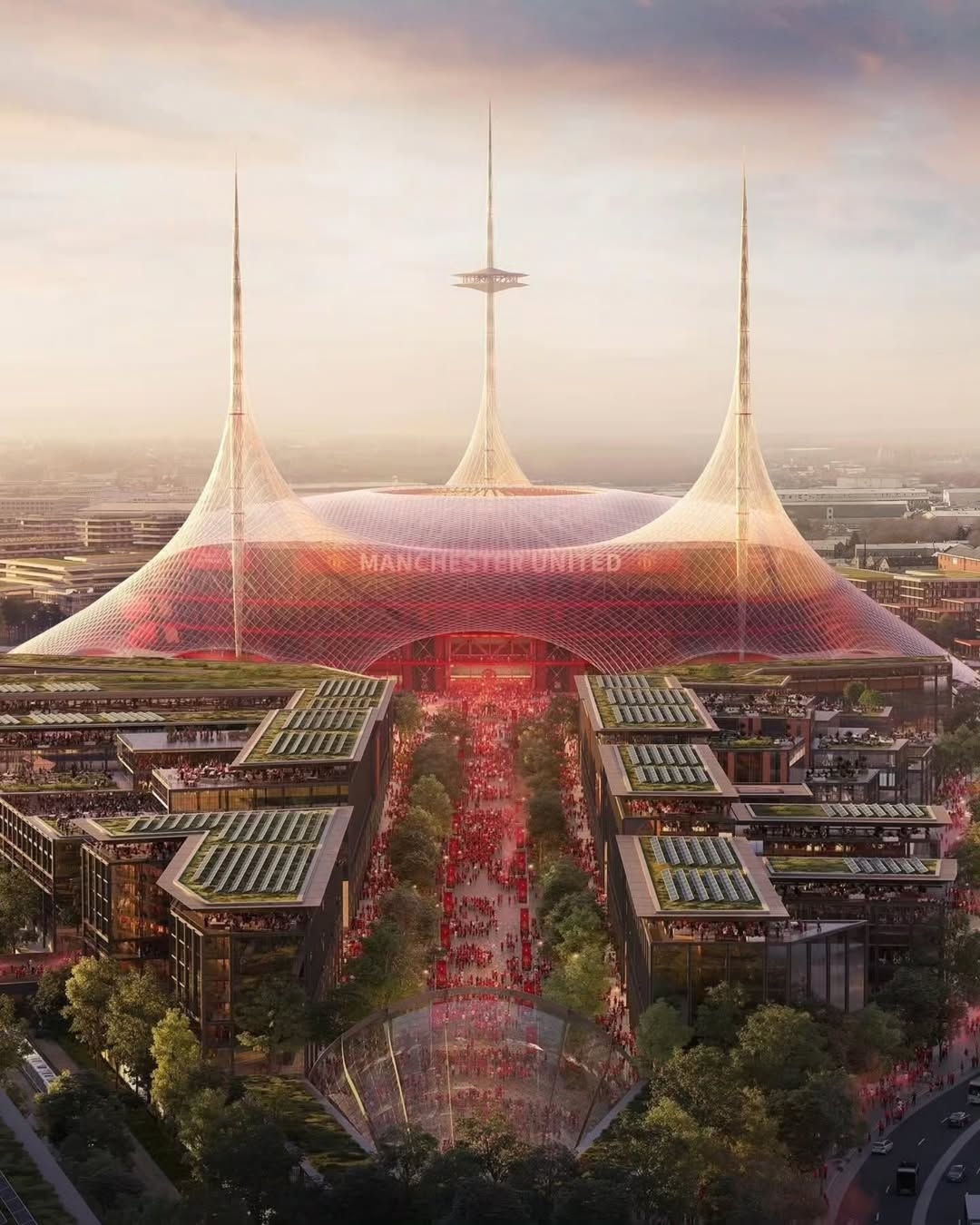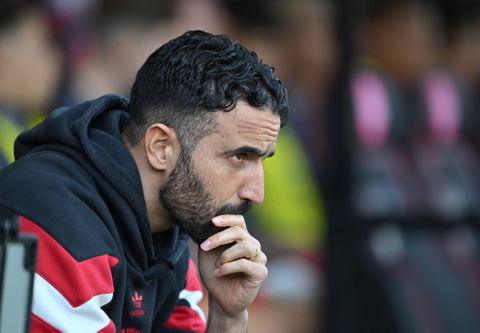Manchester United has unveiled ambitious plans to build the largest stadium in the UK—a state-of-the-art, £2 billion, 100,000-capacity arena that could redefine football architecture. This move signals a historic shift, as it likely spells the end of Old Trafford, the club’s home since 1910.
A Vision for the Future
Co-owner Sir Jim Ratcliffe is driving the project, aiming to construct the “world’s greatest football stadium.” Designed by renowned architects Foster and Partners, the stadium will feature a revolutionary umbrella design, a public plaza twice the size of Trafalgar Square, and three towering “trident” masts reaching 200 meters high—visible from 25 miles away.
United plans to complete the stadium within five years, continuing to play at Old Trafford in the meantime. The project is part of a broader regeneration effort, expected to create 92,000 jobs, build 17,000 homes, and attract an additional 1.8 million visitors annually. The UK government has already given its backing, with Chancellor Rachel Reeves endorsing the vision.
How Will United Fund the Megaproject?
Despite being £1 billion in debt, United believes the stadium is a viable investment. CEO Omar Berrada calls it a “very attractive investment opportunity,” with confidence that funding will be secured. Experts suggest financing will likely involve a mix of private investment, loans, and potential shareholder contributions—including from Ratcliffe himself.
Football finance expert Kieran Maguire draws comparisons with Tottenham Hotspur, who tripled their matchday and commercial income after building their new stadium. He argues that a multi-functional venue could generate revenue that far outweighs the additional interest costs. However, concerns remain that ticket prices may rise, potentially alienating local fans.
Farewell to Old Trafford? A Controversial Decision
Leaving Old Trafford is a bittersweet reality for many. Sir Alex Ferguson acknowledges its sentimental value but believes United must “strive for the best” and embrace the opportunity to build a future-proof stadium.
Fan reactions are mixed. While some see it as an exciting new chapter, others fear the club’s heritage and working-class roots will be sidelined in favor of a corporate spectacle. The Manchester United Supporters Trust (MUST) has expressed concerns about affordability and atmosphere, urging the club to ensure fans remain at the heart of the project.
The Race to the World’s Biggest Stadiums
If completed as planned, United’s new ground will rival some of the world’s most iconic stadiums:
- Nou Camp (Barcelona, Spain) – 105,000 (post-renovation)
- Narendra Modi Stadium (India) – 132,000
- Michigan Stadium (USA) – 107,601
- Rungrado 1st of May Stadium (North Korea) – 113,281 (disputed)
United has previously played in the biggest stadium in the US, drawing a record 109,318 fans against Real Madrid in 2014. Now, they aim to create their own colossus—one that could redefine English football’s landscape.
What’s Next?
Construction timelines depend on the government’s regeneration efforts, but United’s leadership is eager to move quickly. Pre-fabricated components will be shipped along the Manchester Ship Canal to streamline the build process.
For now, fans await answers: Will ticket prices soar? Will the stadium maintain its legendary atmosphere? And most importantly—will Manchester United truly deliver the world’s greatest football stadium?
One thing is certain: the club is taking a massive step toward the future, and the football world will be watching.


































